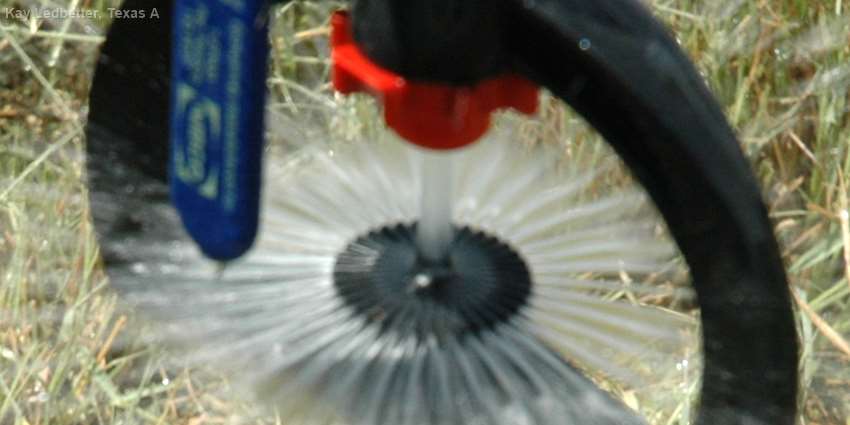Farming is a business, and the actions of farmers will be based on economics—even when it comes to water conservation, according to a recent study by Texas A&M AgriLife Research.
Extremely small recharge rates in the Ogallala Aquifer indicate depletion is inevitable, and that has policymakers scrambling to find ways to prolong its life and ensure a smooth transition to the dryland production to minimize impacts on the overall economy, said Dr. Seong Park, AgriLife Research economist in Vernon.
Park said, however, not all tools proposed or implemented by policymakers will be effective in working toward that goal.
The paper, “Will farmers save water? A theoretical analysis of groundwater conservation policies,” was recently published in the Water Resources and Economics journal and provides a look at the alternatives being offered and their potential to conserve water.
The study was conducted by Park; Dr. Tong Wang, former AgriLife Research post-doctoral researcher now at the South Dakota State University Department of Economics; and Dr. Hailong Jin, at the Black Hills State University College of Business and Natural Sciences. Funding was provided through the U.S. Department of Agriculture–Agricultural Research Service Ogallala Aquifer Program.
Using the Ogallala Aquifer as an example, their paper analyzes whether current and potential groundwater conservation policies across the Southern Great Plains provide profit-driven farmers with incentives to save water.
“We wanted to focus on the incentives provided by selected policy tools to ensure water savings on the farmer’s side and achieve the sustainability goal,” Park said.
He said their theoretical study of the impacts of different policy options on groundwater conservation potential was conducted after previous studies determined voluntary and incentive-based water conservation programs may have “unintended or even perverse consequences.”
“Very few attempts had been made to analyze the effectiveness of different policy alternatives in incentivizing an individual farmer to actually save water,” Park said. “We also wanted to look at the effectiveness of the alternatives based on regional characteristics such as groundwater depth, satiation thickness and feasible crop patterns.”
He said a majority of existing literature modeled the future depletion rate of the Ogallala Aquifer from the perspective of a regulatory agency that can allocate water use effectively and in an efficient manner.
However, farmers tend to make short-term decisions in response to current output prices and input costs without considering long-term profit consequences.
“What we found was that in order to achieve the water-saving goals in regions with high pumping cost, rather than providing a subsidy for the new technology installation or charging a unit water tax, policymakers should offer a unit subsidy for saved water and a subsidy for water-conservation crops,” Wang said. “These are more promising to achieve water savings, as it directly rewards farmers for actual water saved.”
Water rights retirement programs or water buyout programs are an example of providing compensation on a land basis for farmers willing to retire their water right, she said.
“However, our results show a fixed compensation rate tends to attract the land with low productivity and high water cost, thus compromising the program’s effectiveness because most of the enrolled land initially did not use much irrigation water.”
Wang said conceptual models on farmer incentives rarely consider these factors, so their study filled in those gaps.
“We studied farmer’s incentive-driven responses to the following policy tools: irrigation technology subsidies, increased water costs, unit subsidies for water savings and subsidies on water-conservative crops,” she said.
Park said future studies should examine the relationship between water pumping cost, crop price and crop patterns to identify the proper price subsidy to more water-conservative crops to achieve the water conservation goal.
“Theoretical modeling from the farmer’s standpoint as well as empirical studies based on farm-level data in different regions could provide policymakers with more detailed information on the extent of water savings by the varied water-conservation policy tools,” he said. “After all, it is the farmers who make the water-conservation decisions.”
Read the paper and the full AgriLife Today article for more information.

